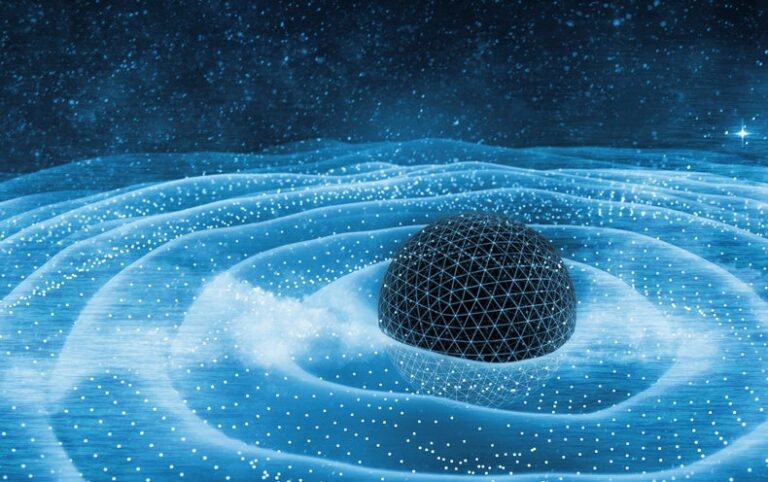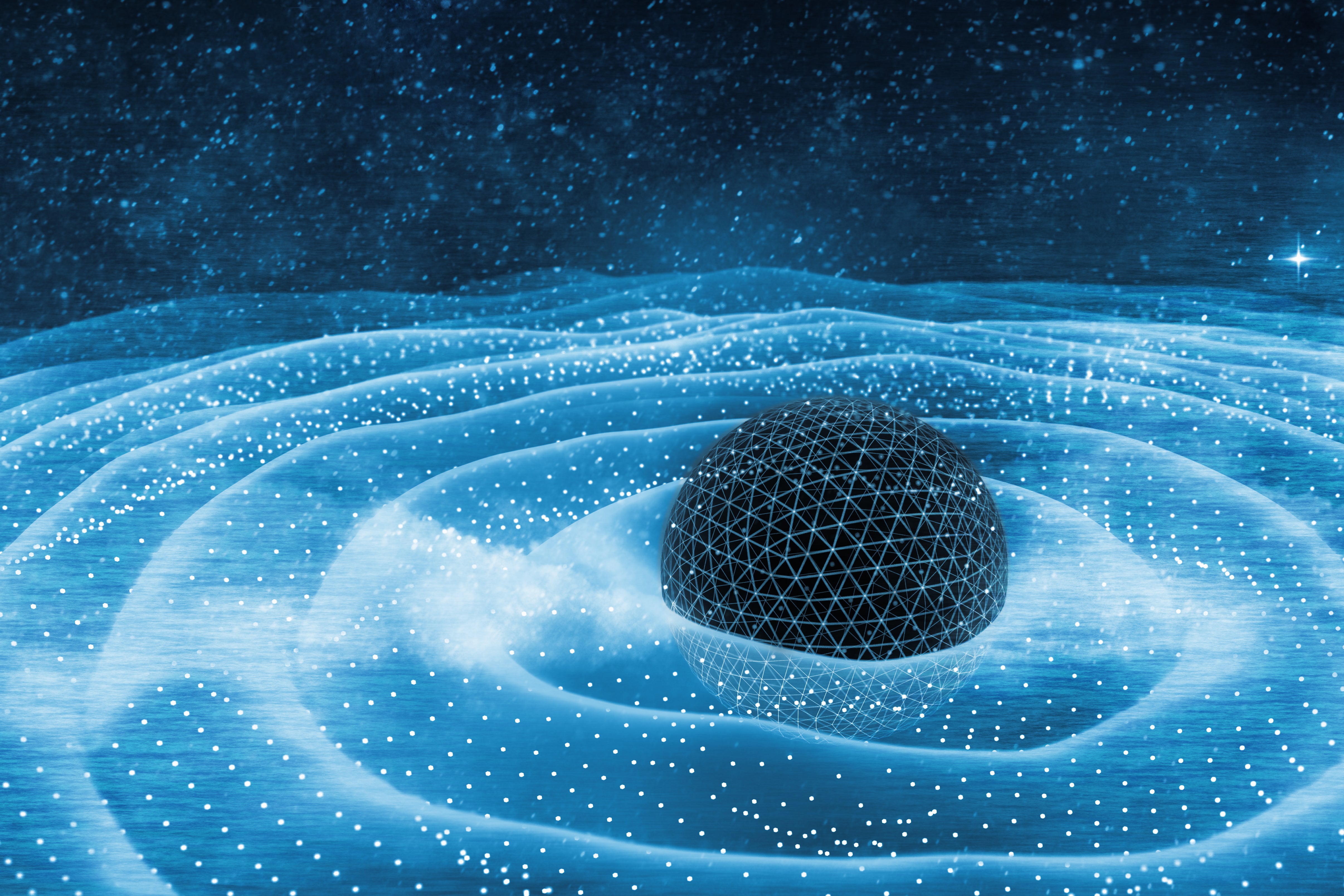
[ad_1]

In June, a new era in astronomy began with the apparent discovery of low-frequency gravitational waves, the ambient hum of spacetime ripples pervading the universe. That announcement came from a huge collaboration of researchers around the world. Groups in the U.S., Europe, India, Australia and China are each working on their own similar experiments and are pooling their data together to improve the result. With evidence for these never-before-seen gravitational waves now firmly in hand, all those disparate teams are now feverishly gathering more data for a grander goal: to understand exactly where this background hum is really coming from. Many experts suspect that the hum mostly emerges from pairs of supermassive black holes spiraling together in the gradual process of merging—but it could instead come from even stranger sources that might represent thrilling new branches of physics. “We’re right at the very beginning of the field,” says Chiara Mingarelli of Yale University, part of the U.S.-led collaboration, NANOGrav.
The announcement came on June 28 from NANOGrav and the other so-called pulsar timing arrays (PTAs), which use radio telescopes to track the precise arrival time of the regular flashes from pulsars, rapidly spinning neutron stars left behind after supernovae. Using dozens of pulsars and monitoring the arrival times of pulses to nanosecond-scale precision on decadal timescales, they can discern background gravitational waves passing through our solar system. Such waves slightly shrink or expand the intervening space between our planet and the targeted pulsars, creating telltale offsets in the arrival times of pulses. The astonishing result follows an earlier epoch of discovery that began in 2015, when the Laser Interferometer Gravitational-Wave Observatory (LIGO) first detected gravitational waves produced by colliding stellar-mass black holes and neutron stars. LIGO, its European counterpart Virgo and similar facilities continue their hunt for these higher-frequency gravitational waves today.
The evidence for a background hum of low-frequency gravitational waves comes from a total of 115 pulsars that were observed across many years by the multiple teams. Now efforts are underway to combine all those pulsar timing data into a single data set as part of the International Pulsar Timing Array (IPTA), which will improve the data set’s overall sensitivity. “We’re working on this together,” Mingarelli says. “We have one representative from each PTA [working] to start combining the data.” That collective effort has been ongoing for two years already, and more definitive results are expected to appear by the end of 2023 or sometime in 2024. “That is going to be the most sensitive pulsar timing array data set that’s ever been put together,” says Nihan Pol of Vanderbilt University.
China’s ambivalent involvement in joining the IPTA’s efforts is somewhat complicating matters. “They are not part of the agreement for this data release,” says Scott Ransom of the National Radio Astronomy Observatory (NRAO) in Virginia. “In the next few months, they may say they want to play nice with the rest of the community, or they may continue to go on their own. We just don’t know.” The Chinese Pulsar Timing Array team is in an enviable position because it has unfettered access to the huge Five-hundred-meter Aperture Spherical radio Telescope (FAST) in the nation’s southwestern region. FAST is far more sensitive than any radio telescope currently in existence and twice as powerful as the Arecibo Telescope in Puerto Rico, which collapsed in 2020. “[FAST] is way better than almost every other [radio] telescope in the world,” Ransom says. “It’s incredible for pulsars, period.” For example, although China’s PTA has spent just three years timing pulsars with FAST, it was still able to find similar hints of low-frequency gravitational waves that took 15 years for NANOGrav to uncover. Members of China’s PTA team did not respond to requests for comment from Scientific American.
FAST is unlikely to dominate the field forever, though. Currently, the next-best radio telescope for pulsar timing is MeerKAT, a collection of 64 dishes in South Africa, which will have its own data added to the IPTA’s current efforts. A 2,000-dish-strong project planned for Nevada called DSA-2000 (Deep Synoptic Array) could be equally promising. A quarter of its time is set to be dedicated to NANOGrav’s pulsar timing observations. “That would be a huge boon to our science,” says Stephen Taylor of Vanderbilt University, NANOGrav’s chair. And the upcoming Square Kilometer Array (SKA) in Australia and South Africa, set to boast some 200 antennas by 2028, with thousands more to follow, should, at minimum, match FAST’s capabilities. “SKA will be as sensitive as FAST or even more sensitive,” Ransom says.
Regardless of geopolitical concerns, astronomers across the globe are united in their eagerness to find the source of this gravitational-wave hum. By gathering and comparing the timings of more and more pulsars, they hope to start building a more detailed map of this background noise on the sky. If pairs of death-spiraling supermassive black holes are the cause, they should eventually appear as “hotspots” on this map. “It’ll be a slow resolution of the individual sources” over years, Taylor says. “It won’t necessarily be a single eureka moment. It’s a slow burn.”
If such hotspots can be identified, however, then astronomers could start probing the particulars of supermassive black hole pairs. “We would be able to learn how far apart the binaries are,” says Caitlin Witt of Northwestern University, as well as the masses of the constituent black holes. Other telescopes might then be able to scrutinize and study the black holes’ cosmic environs, potentially revealing more about the role these gravitational behemoths play in galactic growth and evolution. “A supermassive black hole binary picked up by a PTA will be followed by all sorts of electromagnetic and neutrino [observations] and even photos of those things,” says Achamveedu Gopakumar of the Tata Institute of Fundamental Research in Mumbai, who is chair of the Indian Pulsar Timing Array. “That will be amazing, and that’s what we are looking forward to.”
Pol has already sought such hotspots in the available PTA observations by looking in the data for signs of anisotropy—that is, signs of variation and structure rather than formless homogeneity. Although statistically inconclusive, the results do show tentative hints of some hotspots, such as one toward the Virgo Cluster, a large group of galaxies about 50 million light-years from Earth. “We do see some interesting features,” he says. “But we really need more data.” So far, the potential hotspots seem to correlate with regions of the sky where fewer pulsars have been used in the data sets, meaning the anisotropy may simply be a miragelike artifact of data collection. “The uncertainties on those measurements could just be so big that [the potential hotspots prove to be] consistent with the rest of the sky,” Pol says.
If, over the next few years, no anisotropy emerges, that could point to stranger things as the source of low-frequency gravitational waves. One possibility is they are the remnants of “phase transitions” in the early universe that were caused by rapid cosmic expansion shortly after the big bang. “A phase transition is like the way boiling water goes from a liquid to a gas,” says Andrea Mitridate of the German Electron Synchrotron (DESY). “In the pot of boiling water, you form these bubbles of gas that expand and collide. Something similar could take place in the plasma of the primordial universe.” Such phase transitions could give rise to cosmic strings, hypothesized one-dimensional sinews of energy that can warp, snap and break as they undulate through the universe, producing gravitational waves. Cosmic strings and other speculative phenomena cannot yet be ruled out unless the PTAs start to see individual sources that point to supermassive black hole binaries. “If in the next 10 years we don’t start seeing individual sources, that will raise a lot of eyebrows,” Mingarelli says.
Other hunts for gravitational waves will compliment pulsar timing arrays. Besides the ongoing efforts of LIGO and its ilk, this year the European Space Agency (ESA) is expected to move ahead with development of its Laser Interferometer Space Antenna (LISA). This group of three spacecraft will be 2.5 million kilometers apart and will fire lasers at one another in the mid-2030s to hunt for gravitational waves possibly coming from pairs of white dwarfs, the remnant cores left behind when stars like our sun die. LISA may even see the blips produced when supermassive black hole binaries finally merge together. “We need to confirm that supermassive black hole binaries can actually merge within the age of the universe,” Witt says.
For gravitational-wave astronomers, there is tremendous delight in all of these strands coming together. For so long they have wondered if these ripples in spacetime, first predicted by Albert Einstein a century ago, would be detectable. With those lingering doubts all but dismissed, the frontiers of a whole new realm of astronomy are coming into view. “It’s a privileged time to be in this field,” Taylor says. “It’s a gold rush.”
[ad_2]